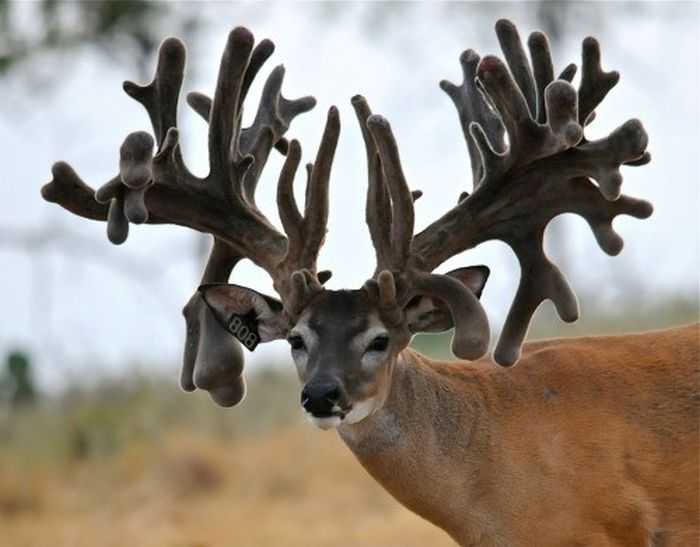Your Hormones in farm animals images are ready. Hormones in farm animals are a topic that is being searched for and liked by netizens today. You can Download the Hormones in farm animals files here. Get all royalty-free images.
If you’re looking for hormones in farm animals images information connected with to the hormones in farm animals keyword, you have come to the ideal blog. Our site always gives you suggestions for downloading the highest quality video and image content, please kindly surf and find more enlightening video content and images that match your interests.
Hormones In Farm Animals. The hormones used in beef production are estrogen, testosterone, or progesterone, or their synthetic versions. Reproductive hormones are derived primarily from four major systems or organs: However, in the different parts of the world the regulation regarding the use of such hormones differs. It is well known that pulsatile gnrh secretion induces an identical pattern of
 The "Meat" of the Problem Veg girlz From veggirlz.weebly.com
The "Meat" of the Problem Veg girlz From veggirlz.weebly.com
Since the 1950s, the food and drug administration (fda) has approved a number of steroid hormone drugs for use in beef cattle and sheep, including natural estrogen, progesterone, testosterone, and. Decapeptide hormone considered as the master molecule for the reproductive control in mammals. Profiles of the blood concentration of the hormones of reproduction during the oestrous cycle and pregnancy have now been described in all farm animals. Hormones are chemicals secreted by various endocrine glands directly into the blood and transported to the respective organs, where they act by regulating various metabolic processes. Instead, the hormones produced by the hypothalamus stimulate the synthesis and release the follicle stimulating hormone (fsh) and luteinizing hormone (lh). Physiological hormone levels vary according to the type of farm animals, their breed, sex and.
These are some of the important.
Reproductive hormones often have multiple roles and operate via negative feedback systems. Consumer when used under the appropriate condit ions as growth promoters in farm animals. The general patterns of metabolism and elimination of endogenous hormones in farm animals have been outlined (90). The use of hormonal active growth promoters (hormones) in farm animals can increase the production of veal and beef significantly up to 15%. The second part reviews growth factors, their mode of communication and roles in the reproductive process in farm animals. In the developing embryo the gonads remain in different.
 Source: styrowing.com
Source: styrowing.com
However, in the different parts of the world the regulation regarding the use of such hormones differs. For all eggs and poultry, in particular those imported, the absence of any hormonal treatment must be certified previous to shipment. In male animals there are generally 4 to 12 gnrh pulses per day. Physiological hormone levels vary according to the type of farm animals, their breed, sex and. Since the 1950s, the food and drug administration (fda) has approved a number of steroid hormone drugs for use in beef cattle and sheep, including natural estrogen, progesterone, testosterone, and.
 Source: hephzibahfarms.com
Source: hephzibahfarms.com
The second part reviews growth factors, their mode of communication and roles in the reproductive process in farm animals. These are some of the important. The second part reviews growth factors, their mode of communication and roles in the reproductive process in farm animals. Neurosecretory cells in invertebrates are usually located in the brain or some nerve ganglia. Advances in this field have been facilitated by the advent of highly sensitive radioimmunoassays of steroid and protein hormones in biological fluids (see jaffe and behrman, 1974).
 Source: thealternativedaily.com
Source: thealternativedaily.com
Reproductive hormones often have multiple roles and operate via negative feedback systems. They are secreted by ductless glands in the body and transferred through the blood to the target organs on which they exert their effects. The neurohormones are moved along the axon and released at the axonal tip. The organ affected by the hormone is called the target organ. In the developing embryo the gonads remain in different.
 Source: cabincreekheritagefarm.com
Source: cabincreekheritagefarm.com
Review on growth hormone in animals. Hormones a hormone is a chemical substance secreted by an organ of the body. Neurosecretory cells in invertebrates are usually located in the brain or some nerve ganglia. In male animals there are generally 4 to 12 gnrh pulses per day. For all eggs and poultry, in particular those imported, the absence of any hormonal treatment must be certified previous to shipment.
 Source: pepper.ph
Source: pepper.ph
Advances in this field have been facilitated by the advent of highly sensitive radioimmunoassays of steroid and protein hormones in biological fluids (see jaffe and behrman, 1974). The organ affected by the hormone is called the target organ. Physiological hormone levels vary according to the type of farm animals, their breed, sex and. For all eggs and poultry, in particular those imported, the absence of any hormonal treatment must be certified previous to shipment. Since the 1950s, the food and drug administration (fda) has approved a number of steroid hormone drugs for use in beef cattle and sheep, including natural estrogen, progesterone, testosterone, and.
 Source: gizorama.com
Source: gizorama.com
In male animals there are generally 4 to 12 gnrh pulses per day. Hormones a hormone is a chemical substance secreted by an organ of the body. Reproductive hormones are derived primarily from four major systems or organs: When lh binds to the leydig cells, it stimulates the. Hormones are chemicals secreted by various endocrine glands directly into the blood and transported to the respective organs, where they act by regulating various metabolic processes.
 Source: veggirlz.weebly.com
Source: veggirlz.weebly.com
Decapeptide hormone considered as the master molecule for the reproductive control in mammals. Physiological hormone levels vary according to the type of farm animals, their breed, sex and. Since the 1950s, the food and drug administration (fda) has approved a number of steroid hormone drugs for use in beef cattle and sheep, including natural estrogen, progesterone, testosterone, and. Reproductive hormones are derived primarily from four major systems or organs: Hormones a hormone is a chemical substance secreted by an organ of the body.
 Source: thefunnybeaver.com
Source: thefunnybeaver.com
The neurohormones are moved along the axon and released at the axonal tip. Neurosecretory cells in invertebrates are usually located in the brain or some nerve ganglia. Various areas of the hypothalamus, anterior and posterior lobes of the pituitary gland, gonads (testis and ovary including their interstitial tissues and corpus luteum),. Advances in this field have been facilitated by the advent of highly sensitive radioimmunoassays of steroid and protein hormones in biological fluids (see jaffe and behrman, 1974). Concerned with reproduction in farm animals can be grouped into male and female reproductive hormones.
This site is an open community for users to do submittion their favorite wallpapers on the internet, all images or pictures in this website are for personal wallpaper use only, it is stricly prohibited to use this wallpaper for commercial purposes, if you are the author and find this image is shared without your permission, please kindly raise a DMCA report to Us.
If you find this site beneficial, please support us by sharing this posts to your own social media accounts like Facebook, Instagram and so on or you can also bookmark this blog page with the title hormones in farm animals by using Ctrl + D for devices a laptop with a Windows operating system or Command + D for laptops with an Apple operating system. If you use a smartphone, you can also use the drawer menu of the browser you are using. Whether it’s a Windows, Mac, iOS or Android operating system, you will still be able to bookmark this website.





